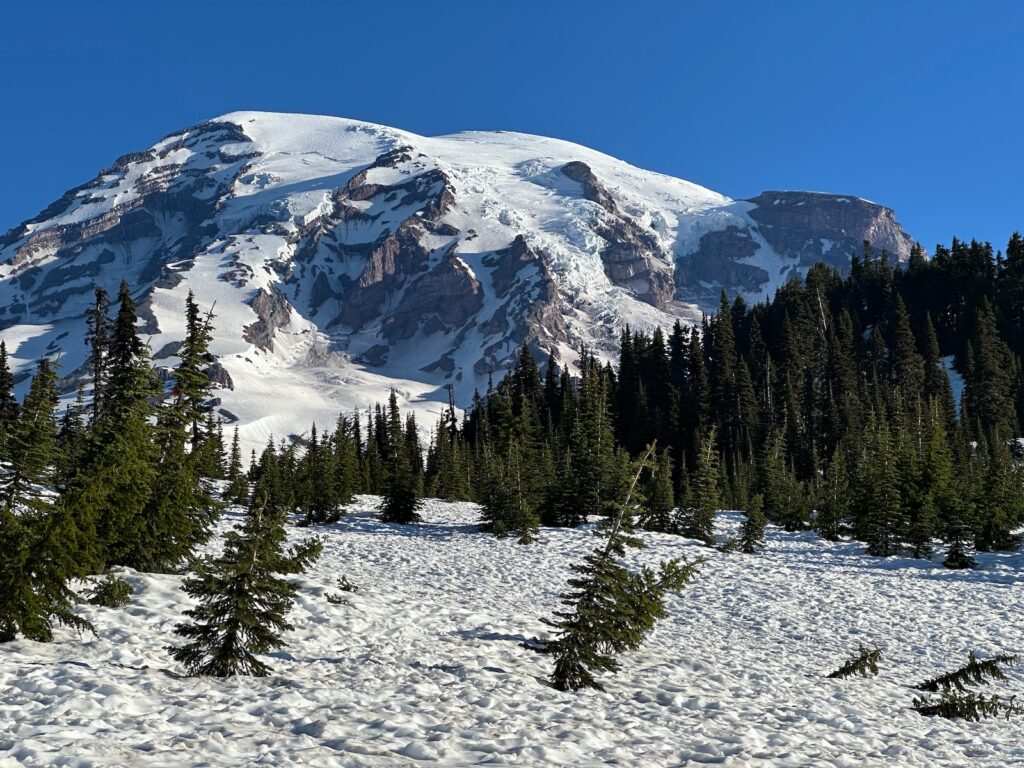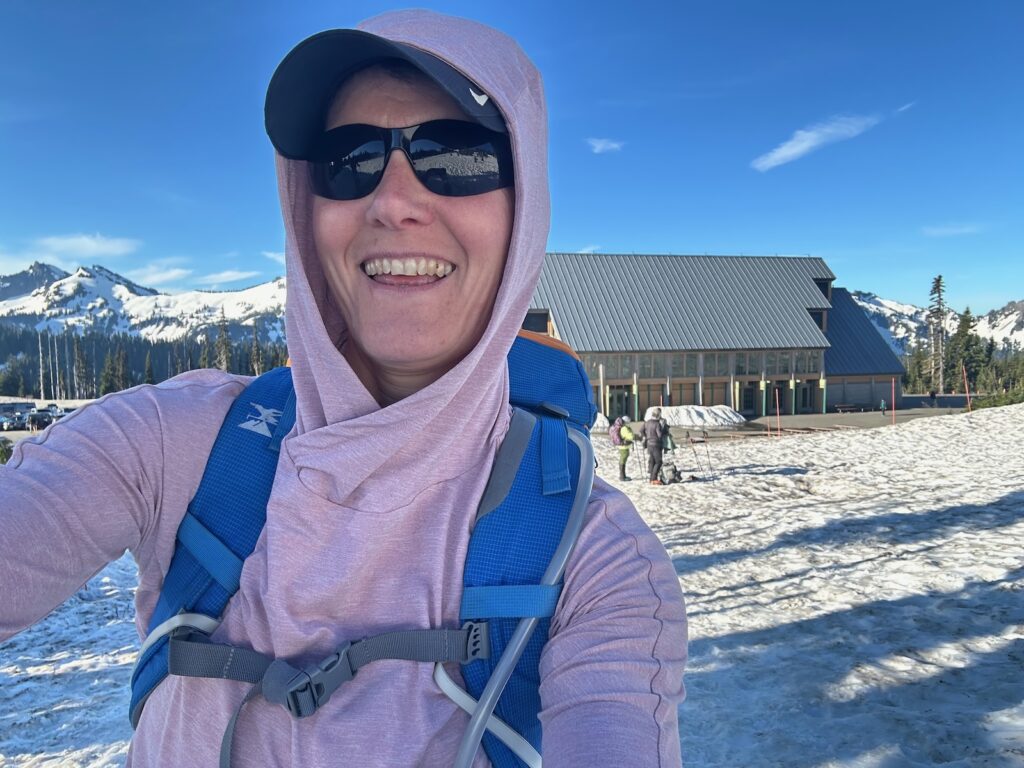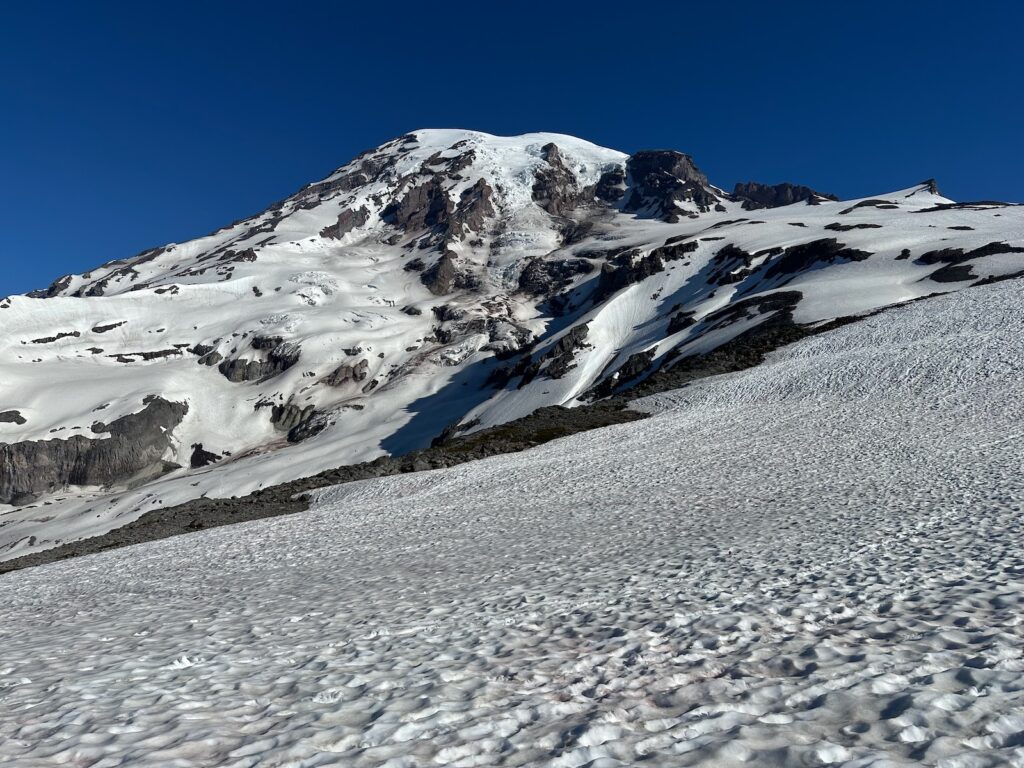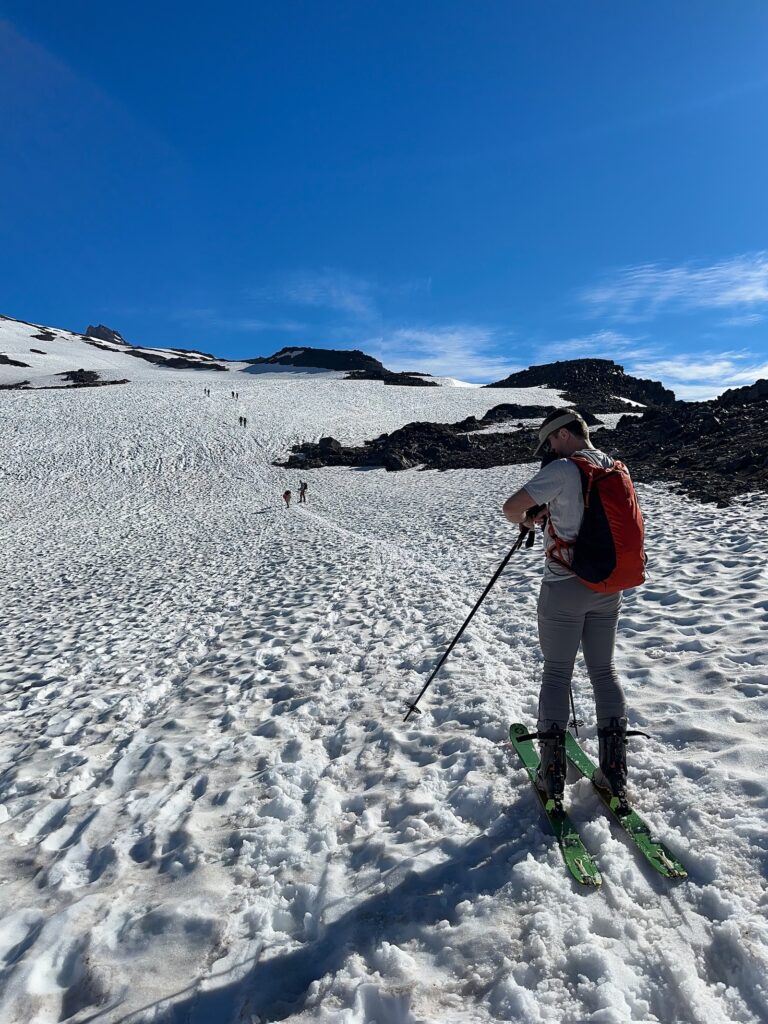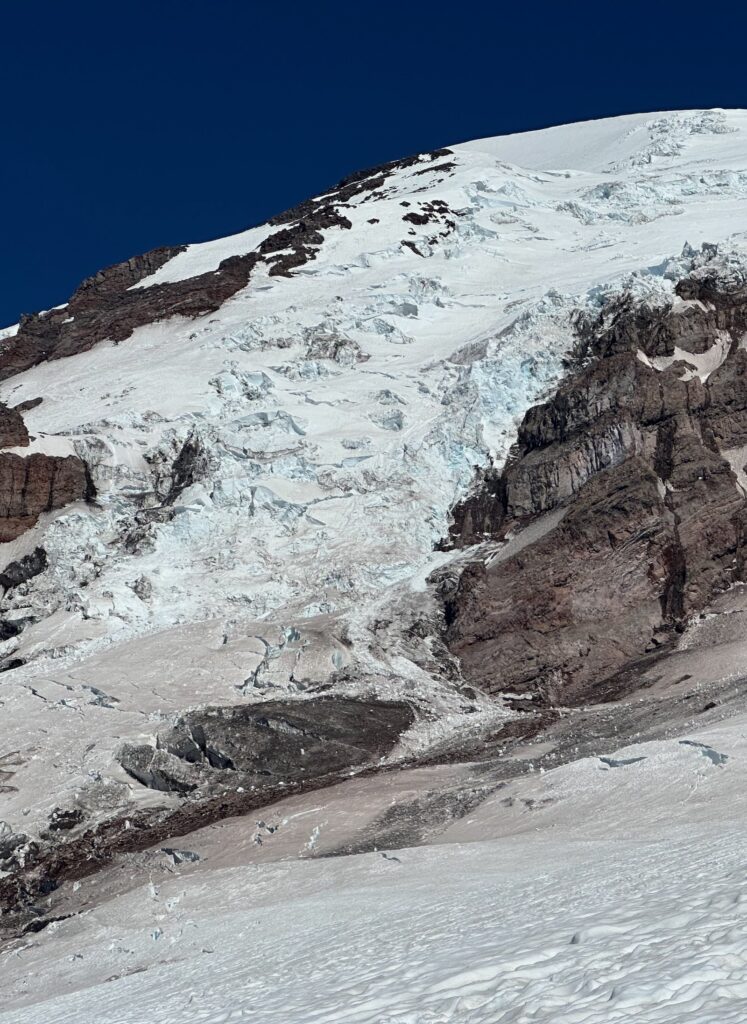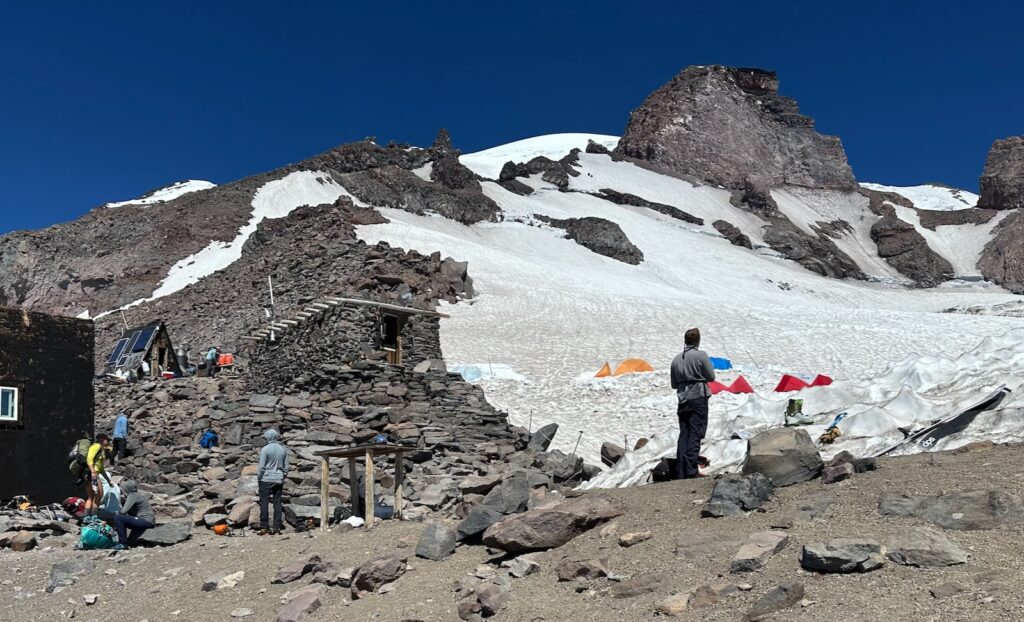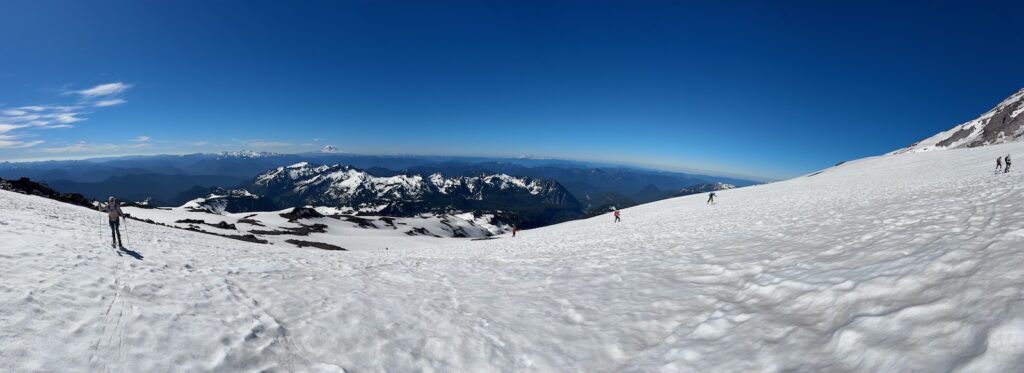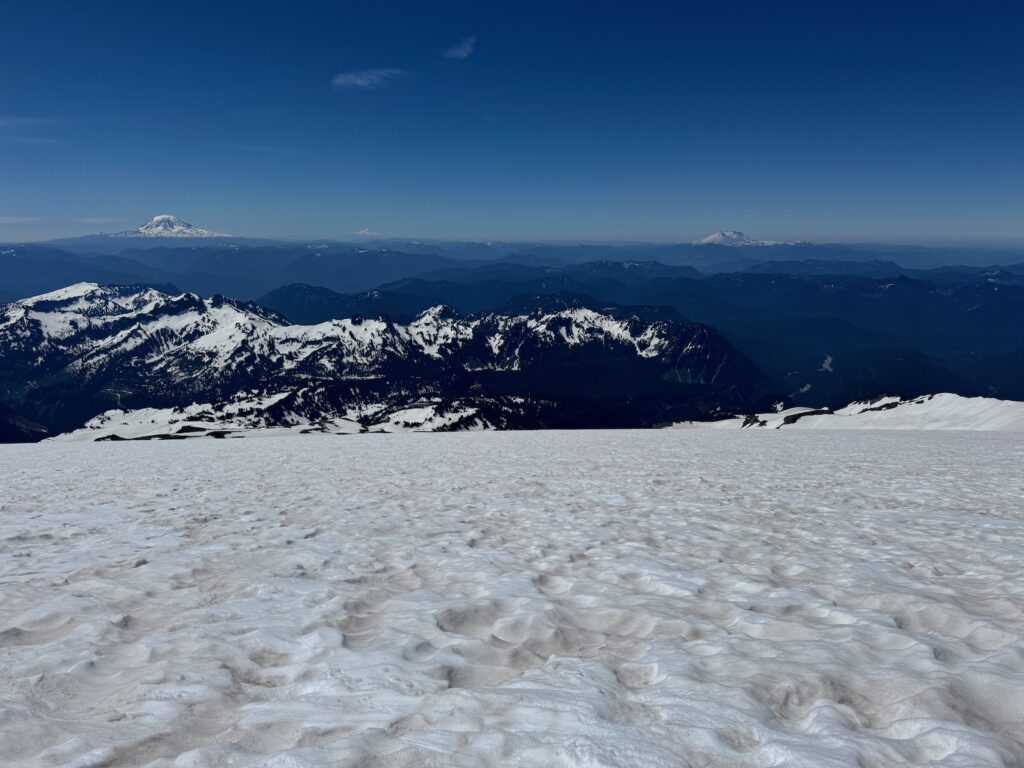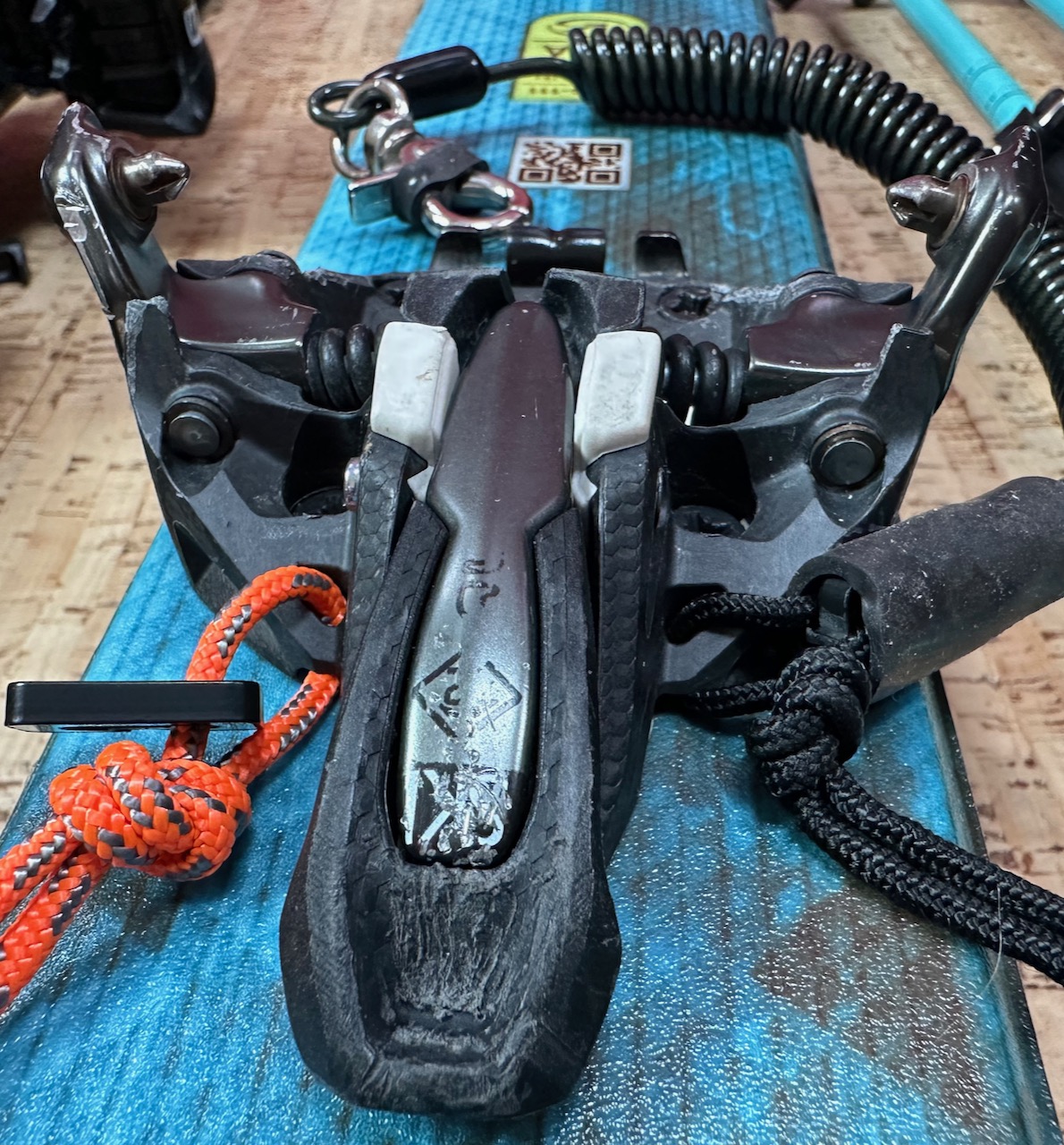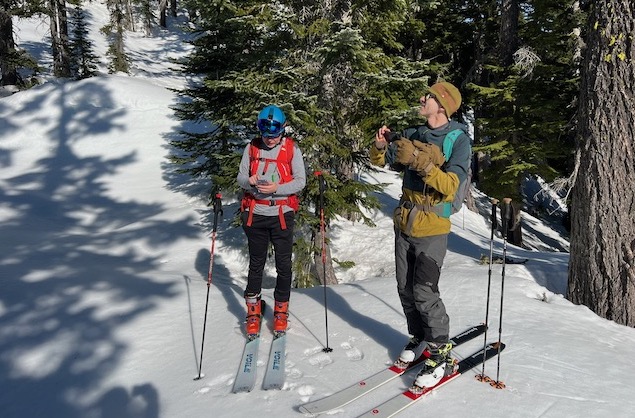Our family spent our Jan-Mar weekends as one of the half dozen families that hosted ski guests at Meany Lodge. In a normal year, guests would spend the full weekends at Meany. Due to COVID, we opened only for day use this year, serving hot meals outdoors and doing all we could to assure everyone had as good a time as was safely possible.
My Patrol Race team from last year decided we’d race again this year. In anticipation of the big race in mid-March, I spent much of January and February prepping my gear and body for the race. The easiest conditioning was skiing the 3 miles to and from the Sno-Park to the lodge each weekend. In addition, I took every chance to sneak away from the Meany campus and into the backcountry with Bev, Maud, Jim, Dan, Adam, Ben, and anyone else who would go. Most weekends I was able to ski about 30 side or backcountry miles on my AT skis.
I was feeling confident in my conditioning when in mid-February I bungee-towed an under-the-weather-from-his-COVID-shot skier uphill for 8.5 miles. A week before the race, Dan broke his thumb and Maud filled his slot. Then another disaster, a couple miles into the race, and Greg suffered a binding blowout. We did a trailside repair that lasted a half mile. Since all 3 racers must cross the finish line together, that dashed our dreams of an official time. Maud and I then escorted Greg to a bailout point. All dressed up and ready to ski, Maud and I pressed on and finished the race in 10 hours. Had we not been disqualified, we’d hold the best time ever for a Meany Lodge team.
The Meany ski season ended in mid-March but we still have the best snow in the mountains that we’ve had in many years. With great snow, well tuned gear and bodies, why stop skiing now? Others feel similarly, and so each week plans have materialized as we keep getting “one more” ski in. As the snow retreats, we follow it up the mountains. Stampede Pass. Rainy Pass. Yakima Pass. Snoqualmie Pass. Amabilis Mountain. Roaring Ridge. Mount Saint Helens. Plans are forming for Mount Adams.
SkiMo, or Ski Mountaineering is a mixture of two of my passions: skiing and climbing mountains. I took a hiatus from both after buying our current house. With the house projects all nearing completion, much of the physical effort I had been focusing there shifted to skiing and now towards SkiMo. The differences between ascending a mountain on boots or skis isn’t dramatic. In soft snow, skis are vastly superior. On steeper slopes and firm snow, kick steps are often superior. With SkiMo ascents, we have both options. We recently ascended most of Mount Saint Helens on skis, then skis with crampons, and finally on boots. The difference between mountaineering and SkiMo is most pronounced on the descent.
The hardest part of climbing on my body, especially my knees, has always been the descent. With SkiMo, the descent is not just icing on the cake, it’s a second slice of cake included. Descending on skis is far more fun, dramatically faster, and huge bonus–my knees aren’t sore for days after.
